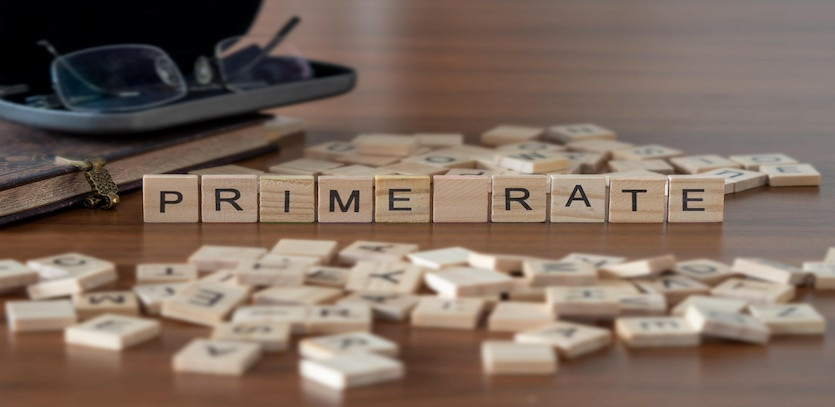The Essence of the Prime Rate
The prime rate serves as a crucial barometer that banks utilize to decide interest rates on loans. As of today, the prime rate stands at 8.25%. If you're considering securing a new variable rate mortgage or a personal loan, comprehending the prime rate and its functionality can provide valuable insights into your potential costs and optimal loan timing.
Unraveling the Prime Rate
In essence, the prime rate is the interest rate banks extend to their most trusted customers for loans. "In this context, the 'best' refers to those borrowers with the least likelihood of default," explains Jeanette Garretty, Chief Economist and Managing Director at Robertson Stephens, a San Francisco-based wealth management firm. This rate is typically the lowest and serves as a benchmark for determining interest rates for other products, such as credit lines, credit cards, and small business loans.
However, the prime rate is merely one of several elements influencing your loan costs. Banks also weigh your creditworthiness—the lower your risk of default, the lower the rate they'll charge, and vice versa.
Who Benefits from the Prime Rate?
Usually, banks extend the prime rate to large, corporate clients abundant in financial resources, as they possess the capacity to repay loans thanks to their wealth and assets. For individual consumers who lack these resources, banks commonly charge the prime rate in addition to a surcharge related to the desired product. For instance, a credit card rate could be the prime rate plus an additional 10%.
Conversely, a bank's top-tier borrowers may negotiate rates lower than the prime interest rate. Garretty notes that this type of negotiation was more prevalent in the 1980s when interest rates were substantially higher. Lenders sought to lure "blue-chip" borrowers by presenting interest rates below the prime rates.
The Influence of the Federal Funds Rate on the Prime Rate
The Federal Reserve is responsible for establishing the federal funds target rate, which guides the rates banks impose when lending money to each other overnight to meet Federal Reserve requirements. Garretty suggests a general rule: the prime rate equals the "fed funds plus 3". When the fed funds rate shifts, one bank typically initiates a change in its prime rate that very day.
The prime rate only adjusts when the federal funds rate does. "Unlike other rates that fluctuate daily or weekly due to short-term financial market conditions, supply, and demand," states Garretty. Once a bank revises its prime rate based on the new federal funds rate, it begins to modify rates for many of its other lending products similarly. When both the federal funds rate and the prime rate decrease, other rates tend to follow suit, making borrowing less costly.
However, it's important to remember that specific lending products, like fixed-rate mortgages and certain student loans, rely on metrics such as SOFR and are less linked to the prime rate's movements.
Today's Prime Rate Landscape
Dating back to the 1930s, the prime rate was first employed by banks to establish interest rates for short-term lending to their most creditworthy customers, following the Great Depression. Throughout the subsequent decades after World War II, the prime rate remained relatively steady, ranging from 2% to 3%.
Nevertheless, during the economic recession and inflation surge of the 1970s, the prime rate began to ascend significantly. In December 1980, it peaked at an all-time high of 21.5% when the Federal Reserve raised interest rates to counteract inflation.
Over the following decades, the prime rate experienced significant fluctuations, reflecting the economy's peaks and valleys and generally mirroring other benchmark interest rates. During periods of economic expansion, the prime rate tends to rise, whereas during recessionary periods or financial instability, it tends to decrease. As of March 22, 2023, the prevalent prime rate in the U.S. is 8.00%, according to The Wall Street Journal’s Money Rates table. This source consolidates the most frequently charged prime rates throughout the U.S. and other countries.
Currently, the federal funds rate lies between 5.00% and 5.25%. Keeping in mind the "fed funds plus 3" rule of thumb, you can see its application: 3 + 5.25 = 8.25.
Each bank possesses the autonomy to determine its own prime rate. Most base it on the national average listed under the WSJ prime rate, but some may deviate depending on their objectives. To put it into perspective, the Prime Rate was 4.25% in April 2020, but now it's inching towards 8%. Daniel Milan, managing partner of Cornerstone Financial Services in Southfield, Michigan, says, "Rates began to rise around 2015 and continued to do so until March 2020 due to Covid-19. If you delve deeper into history, you'll find rates often hovered in the mid to high single digits, or even low double digits, particularly during the '80s and '90s."
Determining the Prime Rate
The prime rate, an interest rate set by individual banks, forms the base rate for a variety of loans, including small business loans and credit cards. While the Federal Reserve does not directly dictate the prime rate, many financial institutions opt to set their prime rates partially based on the Federal Open Market Committee's (FOMC) established target level for the federal funds rate.
The Wall Street Journal publishes one of the most referenced prime rates daily. As stated earlier, banks usually employ the fed funds + 3 formula to determine the current prime rate. As of May 2023, the prime rate in the United States is 8.25%, while the fed funds rate targets between 5% and 5.25%. The prime rate has been on the rise since May 2022, around the same time the Fed started hiking the fed funds rate to combat rampant inflation.
Even though other U.S. financial services institutions note any changes the Fed makes to its prime rate and may use them to justify changes to their prime rates, they are not mandated to increase their prime rates following the Fed.
The Prime Rate's Effect on You
The prime rate establishes the benchmark for various bank loans. When the prime rate rises, so do the costs of small business loans, credit lines, car loans, certain mortgages, and credit card interest rates. Given the current historically low prime rate, borrowing costs are lower than in the past.
The prime rate is especially relevant if you have any variable interest rate debt, where the bank can modify your rate. This includes credit cards and variable-rate mortgages, home equity loans, personal loans, and variable-rate student loans. If the prime rate increases, the bank might charge you a higher interest rate, thereby raising your monthly payments on variable debt.
Garretty points out that "decisions by a bank's asset and liability committee will ultimately determine where those other rates will settle." They might also factor in their business strategies. For instance, if one bank aims to increase credit card business while another doesn't, they'll quote different credit card rates, despite both operating off the same prime rate.
Hence, the effect of a prime rate increase might not be instantly apparent. However, in the long run, the prime rate nudges consumer rates in the same direction. By monitoring the prime rate trends, you can gauge future borrowing costs and prepare for any shifts accordingly.





